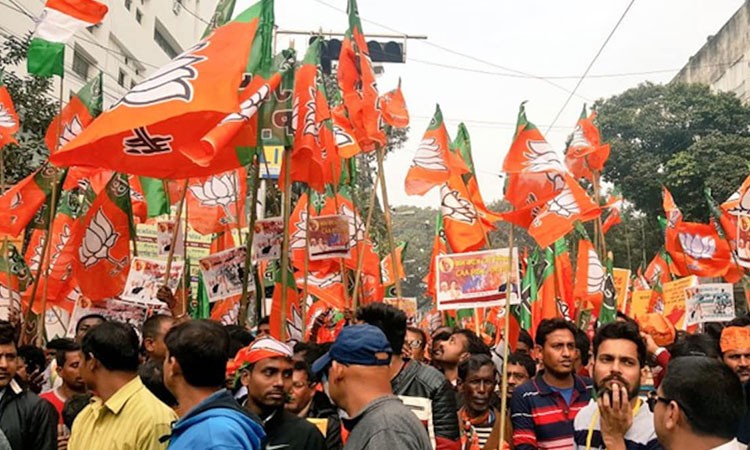
BJP to offer collective leadership formula in the upcoming state elections
by Prashant Tewari / 26 September 2023The Bharatiya Janata Party, known for its strategic political moves, has taken an unexpected turn in the run-up to the upcoming state elections in India. In an intriguing move, the BJP has decided not to project a chief ministerial candidate in any of the five states slated for elections later this year. This includes the key Hindi-speaking states of Chhattisgarh, Madhya Pradesh, and Rajasthan, as well as Telangana and Mizoram. Instead, the party plans to rely on what they term "collective leadership" to secure victory.
Amid Speculation over Shivraj Singh Chouhan's Future
This move comes at a time when speculation is rife regarding the future of Madhya Pradesh Chief Minister Shivraj Singh Chouhan. Despite his extensive political experience, the 64-year-old leader has not been officially named as a candidate for the chief minister's post in the upcoming elections. This has sparked rumors that the party might consider replacing him to counter anti-incumbency sentiment.
Clarification from Party Sources
While there has been widespread speculation about Chouhan's political future, BJP sources have moved swiftly to quash rumors that he will be dropped from the race. Party insiders have asserted that any talk of Chouhan's exclusion is "completely wrong." However, the caveat remains that "any leader can become chief minister," suggesting that the BJP is keeping its options open.
The Concept of "Collective Leadership"
The BJP's decision to embrace "collective leadership" is not only a departure from the norm but also a strategic gamble. Under this approach, the party will not name a chief ministerial candidate ahead of the elections. Instead, they have indicated that if they emerge victorious, the newly elected lawmakers will collectively decide on the chief minister.
Implications and Analysis
This move by the BJP carries both risks and potential benefits. On the one hand, not projecting a chief ministerial candidate allows the party to avoid the potential negative impact of anti-incumbency sentiment against specific leaders like Chouhan. It also fosters a sense of unity within the party, as no single leader is singled out for the role. Additionally, it keeps the opposition guessing and disrupts their strategy.
However, on the flip side, this strategy could also lead to confusion among voters, who often cast their ballots with the chief ministerial candidate in mind. The lack of a clear face for the party may make it challenging to convey a strong and cohesive message to the electorate. Furthermore, it remains to be seen how the party will handle the process of selecting a chief minister after the election, potentially leading to internal power struggles.
Conclusion
The BJP's decision to forgo projecting a chief ministerial candidate in the upcoming state elections is a bold and unconventional move. It reflects the party's willingness to experiment with new strategies to secure victory, even at the risk of potential pitfalls. As the elections draw closer, all eyes will be on the BJP and its "collective leadership" approach to see if it pays off or proves to be a political gamble that backfires.
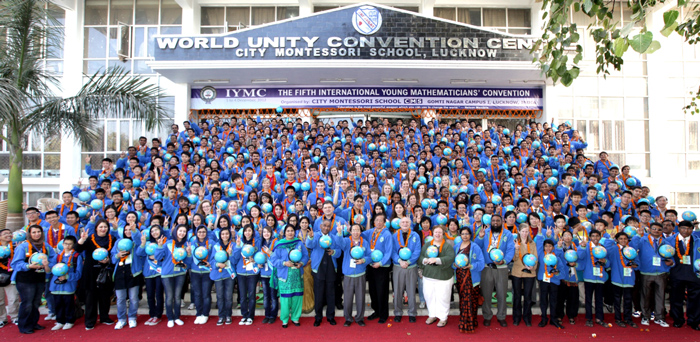
National Sports Day celebrated at City Montessori School
by Ratan Shukla / 14 September 2023At the City Montessori School, Rajajipuram Campus II, the National Sports Day on 29th August was celebrated as 'Athlopolics', a sports event was conducted dedicated to the junior section students.
The event was a healthy amalgam of prayers, pledges, and athletic activities, all curated to cultivate a disciplined and physically fit lifestyle among the students.
The event commenced with a prayer and a powerful thought, followed by a virtue and pledge, setting an honorable start to an energetic day.
The importance of embracing sports in daily life was emphasized by the Head Girl during her speech, further reiterated by the principal's address. The inspirational speeches set the stage for the physical endeavors to follow, starting with a stimulating aerobics session led by the energetic girls of Class 5.
Post aerobics, a range of races engrossed everyone present. The first race, Carrom, was fervently inaugurated by the principal herself. Diverse races ensued, including traditional sprints, one-leg and three-legged races, and shuttle and relay races which witnessed immense enthusiasm and competitive spirit.
Unique, fun-filled competitions like the pastry race, Hoola hoop race, crocodile race and throw and catch race left everyone exhilarated. The girls showcased their agility in the skipping race. It was then followed by a gripping Kabaddi match by the boys of Class VIII.
Without a doubt, one of the most anticipated events of the day was the gripping Kabaddi match between the boys of Class VIII. As the audience waited, the atmosphere was thick with palpable excitement and eager anticipation. With every Kabaddi chant, the venue was filled with an electric atmosphere, further fuelled by the loud cheers and encouraging shouts from the audience.
The day was concluded by prize distribution, leaving behind a trail of victorious smiles and the joyous spirit of sportsmanship.
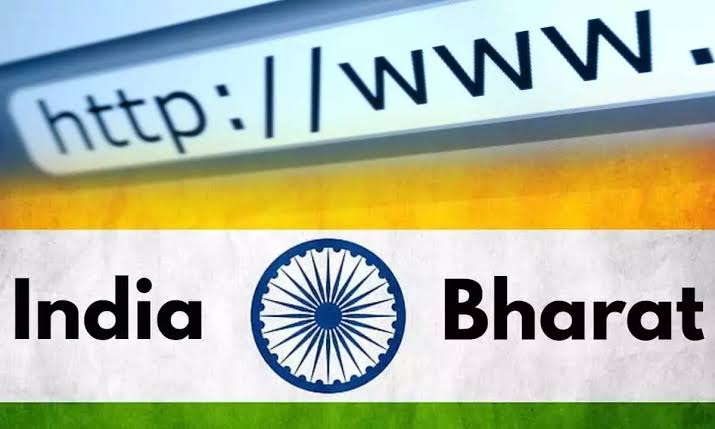
From ‘India’ to ‘Bharat’: Reclaiming the identity of an ancient Nation
by Opinion Express / 11 September 2023The sacred scriptures that originated on this soil referred to this immense, varied, and mystic land as distinct and diverse in every possible aspect and dimension—its geographical, historical and spiritual being that came to be known as the homeland of "Bharata", which is a culturally and intellectually rich and awakened world located in the South East ("Dakshina Poorva Dighbhage, Bharata varshe, Bharata khande"). This land which was the chosen home of the descendants of King Bharata, was known for its vast treasure of knowledge immortalised in books that are primitively simple and holistically and esoterically profound in philosophy, science, medicine, and just about anything that is concerned with the earthly and heavenly aspects of human life. A critical reading of history would alert us to the naming of this land from a conqueror’s perspective, a perspective that would be inevitably limited, much like the blind men in the story trying to name the elephant. This was bound to be impressionistic. Some of these names are referents to such geographical and cultural features as the Sindhu, and Hindu, Indica and India. Megasthanes, the Greek traveler, whose extinct text "Indica", which survives only some surviving fragments sings paeans to the rich cultural, philosophical and spiritual heritage of this country.
As E M Forster says, the sun can look down at this part of the world and claim it to be the flesh of its flesh, the blood of its blood, for, India has never been under the sea unlike other landmasses. It has a unique, matured look on the one side, and a young, fresh look on the other. Its tectonic plate extends up to the Antarctic, justifying the name of the ocean named after it. All other countries near the Ocean are peripheral to it. Historically, India can also claim to be the cradle of mankind what with fossils of Sivapithecus, to name one, being found in the Himalayas. Isolated from the turmoils of Asia and Europe for a long time, the country evolved a unique culture and history. It stands to reason that this part of the world, unlike any other in every way, and older than any civilisation in its continuity, should have a unique and original name that is given by her own children who know her best.
While it is claimed that political nationalism originated in the British Isles and France’s Burgundy, cultural and social historical bonds are no less binding factors of nationalism. The fact that Sri Adishankara, often compared by Western scholars with St Thomas Aquinas, built mathas more than a millennia ago in the four corners of what came to be called India, establishes no less explicitly and forcefully the concept of India as any political nationalism can. On the other hand, the idea of kala pani excluded other lands from India. The subcontinent forms a natural landmass with the Himalayas in the north and the Ocean in the south. In civilisational and national terms, the idea of India as we know it, was already in place. The fact that some people dismissed India as a “mere geographical expression” is neither here nor there—Metternich said the same words about the Italy of his times. Such denigrators have all been consigned to the dustbin of history. And all the time, there was a Greater India, as some historians have called it, extending to Cambodia (the Southeast Asian version of Kambhoja, or with the Thai capital of yore as Ayuthaya (their version of Ayodhya), India had its own version of the mission civilisatrice, albeit a peaceful one.
The rich legacy of this nation attests to its ancient glory and its historical annals are adorned with every modern feature that our contemporary world boasts of. In Harappa of the Indus Valley Civilisation, there was city planning on the grid pattern, and a drainage system with an advanced plumbing replete with manholes to clean them. In the Mahajanapadas (republics), we had an alternative to the monarchy almost in a Hegelian dialectic of thesis and antithesis. The Sabha and the Samiti were vital moot halls—parliaments—deciding the fate of the land they ruled. Nor was there a conflict between republican and monarchical forms of government as we see today. Harmony was the watchword then, as it is now. The point is that the land developed and sustained an advanced civilisation. It is unfortunate that it came to be known by the name given by foreigners who only saw it literally peripherally. For, if the Indus is a mighty river, there are others such as the Brahmaputra to match. Thus it is very important to find a name that does justice to the land.
The name Bharat is rich in meaning. It is the name of a great and inspiring hero whose prowess was the subject of wonder right from his childhood, and is known to have united India in ancient times. This vision of unity is much needed, since it is from this mystic land hails the profession "vasudhaiva kutumbakam"—the world as one family.
Further, the name Bharat recalls the unsurpassable ancient knowledge, teaching the world numbers and astronomy and thus playing a major role in ushering the modern age. Bharat will be a reassuring hope for the world against imperialist and other anti-civilisational forces.
Perhaps, India is the only country that officially has two names. According to Article 1 of the Constitution of India, "India, that is Bharat, shall be a union of states". It is a union strongly resisting any propensity of secession. In an enlightening moment for the rest of the world, the US Ambassador to India, in the 1980s, when the so-called Khalistani movement was at its peak, said that there are more chances of Texas splitting off from the US than Punjab breaking away from the country. The point is that culturally, historically, and in every conceivable way, the nation has been one, and will remain so. With the name of Bharat, all malicious and centrifugal forces can be neutralised.
Since the name Bharat is already in the Constitution, the change entails no radical departure from it, keeping in place what has been called its “basic structure”. It would only be making it more focused, and more appropriate. The strange juxtaposition of a foreign name and a genuine, indigenous one will no longer puzzle or bemuse Indians—and the world.
The distinguished culture, the remarkable historical legacy, an influential way of life, and a spirituality of cosmic consciousness, which are valued as the intellectual bases for a highly conscious culture sourced from this soil have been a part of the conscious and subconscious experiences of almost all people on this planet. This consciousness should deter and preclude any annoyance and defuse any inept questioning of the necessity of this great nation to be renamed as 'Bharat'. This intellectual acquiescence has led to the obscuring of the nation’s proud legacies and history for centuries together. This historical meekness reconfiguring itself is now trying to at least re-centre its jaded ideas and views to barrenly, out of dead habit, questioning the renaming of the nation.
There was no such susurrus when so many nations across the world renamed their lands to reflect and earn back their historical pride. Turkey, once called Asia Minor, changed its name to 'Turkiye'; Holland renamed as 'Netherlands'; Czechoslovakia as the ‘Czech Republic'; Kampuchea as 'Cambodia'; Siam as 'Thailand'; and Swaziland as 'Eswatini'. Our neighbouring countries have no exception, since Burma renamed itself as 'Myanmar', and Ceylon as 'Sri Lanka'.
As India finds her feet and rises in importance on land, air, and in space, in economics and international affairs, it is time that a colonial legacy and historical accidents are laid to rest and the patina of the ages is wiped clean. While the lessons of history have to be learnt, it is also important that they should not continue their vice-like grip on the country. Thus, historically, culturally, constitutionally, semantically, and in every other sense imaginable, it is appropriate to rename India as Bharat.
(The opinions expressed in this article are personal)
* The author is the Vice Chancellor of The English and Foreign Languages University (A Central University) located in Hyderabad, Shillong and Lucknow.
Prof. E. Suresh Kumar
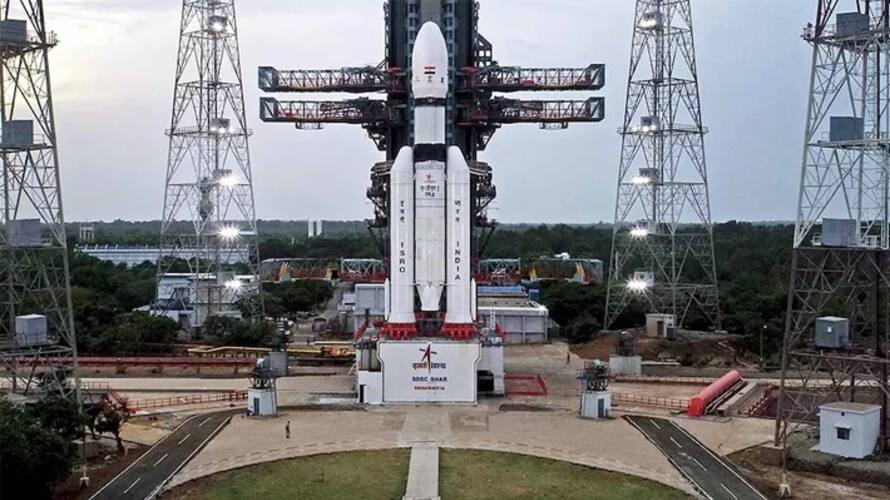
India's Chandrayaan-3 first to land a craft near the Moon south pole
by Opinion Express / 24 August 2023In a remarkable feat, India's Chandrayaan-3 has landed near the Moon's south pole. The successful Moon mission has made India the fourth country to achieve a soft landing on the lunar surface after the US, China, and the erstwhile Soviet Union, and the first to land a craft near the Moon's south pole.
The lander Vikram captured several images of the lunar surface during the power descent. The images show a portion of the landing site, the lander's metal leg and its shadow.
The rover Pragyan rolled out from the lander some hours after the successful touchdown. India became the first nation to land a craft near the Moon's South Pole, a historic triumph for the nation and the world.
This is likely to trigger massive investment in the Indian space sector.
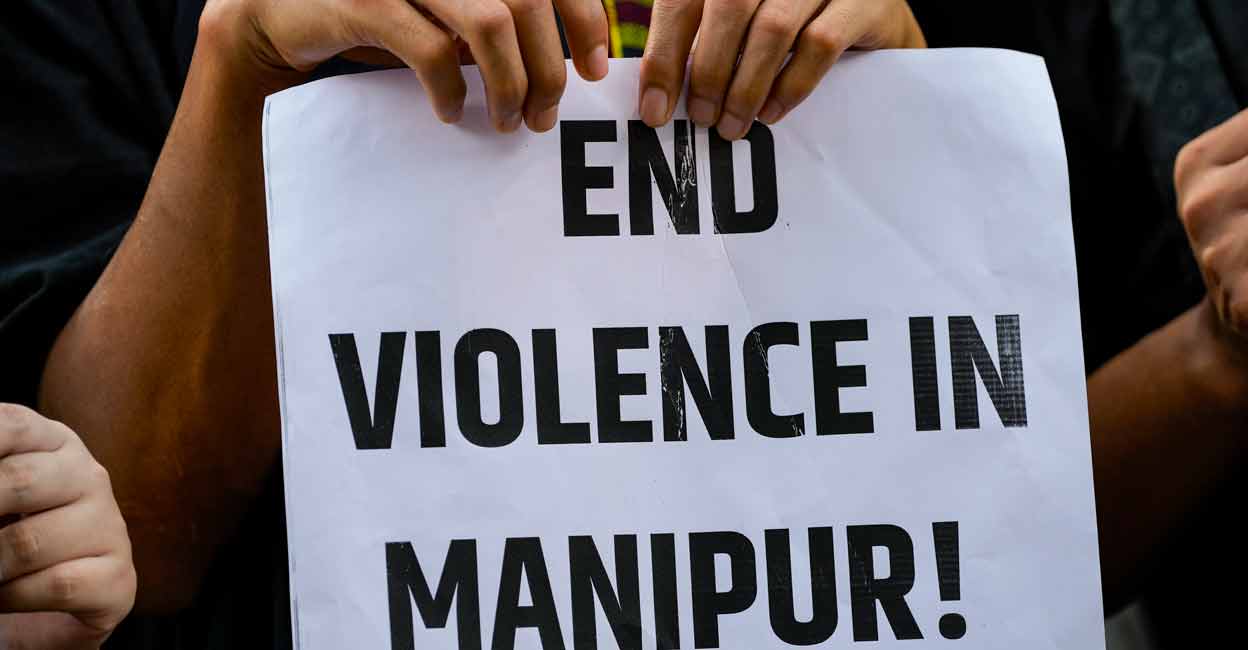
Failure of Rule of Law: Demanding Accountability and Justice for the Manipur Incident
by Jyotika Kalra / 09 August 2023As a society, it is unthinkable that even today women are used as a means to take revenge in a conflict. Women were paraded naked and the whole mechanism shamelessly remained a spectator until they saw the incident became viral and there was no other way to hide it. On the one hand, it shows the ugliness of a patriarchal overview of women and on the other hand, it exposes a grave failure of the rule of law and accountability within our society.
The gruesome details of the Manipur incident are not hidden from anyone but unfortunately, what happened after the incident is even more disturbing. The police took no action to trace the family that was abducted from their custody and no action was taken for 2 months. The proximity of this heinous crime to India & police station, Nongpok Sekmai police station, (as reported in Indian Express December 2, 2020 & India Today Jul 21, 2023) also adds to the sense of disillusionment among the public.
The lack of action for a prolonged period of time following the incident, till the video went viral, prompts questions not only regarding the police inaction but the ineffectiveness of oversight bodies, such as the State Human Rights Commission, State Women Commission, National Commission for Women (NCW) or National Human Rights Commission (NHRC). This inaction raises serious concerns about the integrity of the police and other Institutions responsible for upholding the rule of law.
Regrettably, the Chief Minister is found to be playing theatrics to the crowd by demanding that the accused be hanged. This is a clear display of chaos and crippled leadership where the chief of the state is clearly unaware of his own duties. The Chief Minister forgot the role of hanging an accused falls under the purview of the judiciary.
The viral video of this gruesome incident has not only tarnished Manipur's image, but the entire nation feels embarrassed. As a former member of the NHRC, I feel that the inaction of these oversight bodies is due to the feeling of no actual obligation towards the citizens until either the video goes viral or there is no option but to save their own image.
At the Commissions, there are no oral hearings, and the cases are handled in a very routine manner. The complaints are initially dealt with by junior consultants, who take a call on whether this complaint is serious or not. There is no formal and regular training for them to be sensitized on what are grave and urgent matters and how should they be dealt with. In any complaint, it might take more than a month to pass the first order in the complaint. On the other hand, the emphasis had always been how many complaints were being disposed of. The focus remains on reducing the pendency, forgetting that the purpose of Institutions is to protect Human Rights.
We should also not hesitate to say that the Manipur High Court also failed to protect human rights and fundamental rights. The inactivity of these oversight institutions raises a basic question: what purpose do these bodies have if they are failing in their basic duties? The delayed response from the NCW and NHRC until the video went viral reflects poor functioning and accountability toward the public.
It is imperative that these Commissions take immediate action when presented with such complaints. Accordingly, this incident should be taken as a wake-up call for the Commissions to re-design their functioning and focus more on the protection of Human rights by associating more people working in the field of human rights. It is the commissions that have the responsibility to enquire where the state fails in the prevention of human rights violations, it is they who should have stepped in when these complaints from Manipur started being reported to them in May. The public outcry on the waste of the taxpayer's money on such Institutions needs to be addressed.
It is necessary to understand that these institutions acting neutrally and promptly is fundamental for a strong democracy. At least, the police officials should have been held accountable for being negligent or complicity, under Section 166A of the Indian Penal Code. The Commissions must find out what went wrong and why action was not taken promptly. They must have special and fast-track mechanisms for handling grave and serious cases and should have had a ready mechanism for sending the teams for spot inquiry in such crimes. Even a mere belief among the public and the police officials that the Commission team is coming for a spot inquiry would have changed the situation on the ground. Unfortunately, in this scenario, none of this happened.
As a nation, we believe in Vasudhaiva Kutumbakam, the idea that the world is one family. Yet, incidents like this demonstrate that there are dark elements in our society that resort to gruesome acts of revenge, particularly against women. Our system has built-in redundancies if the state is unable to uphold the rule of law. However, if our commissions fail to live up to this responsibility, we are looking at a grim future.
( Writer is an Advocate-on-record Supreme Court of India, Former Member National Human Rights Commission )
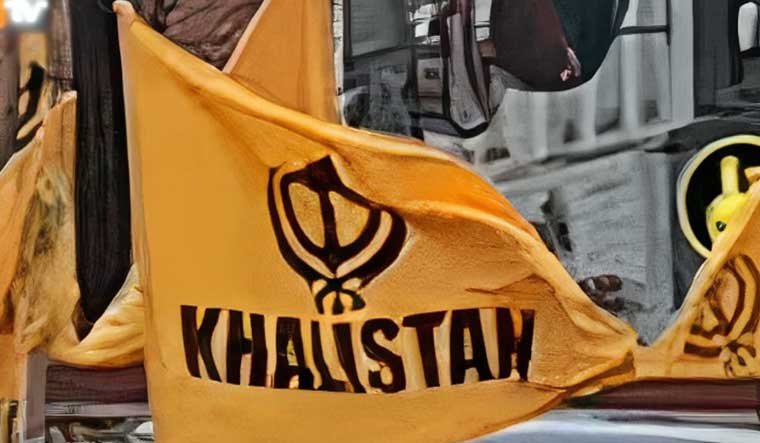
Are Khalistan Freedom rallies promoting justice or spreading propaganda?
by Surjit Singh Flora / 30 July 2023Khalistan Freedom rallies are going to be held on July 8. Gurpatwant Pannu of Sikhs for Justice has announced that rallies will be held in front of Indian embassies around the world on July 8.
Since the beginning of this year in Canada, there have been three such incidents in which pro-Khalistan groups have carried out public activities. Also, at the Sikh Khalsa Day parade in May, images depicted the 1984 assassination of prime minister Indira Gandhi by her two Sikh bodyguards.
The Indian government has consistently condemned these incidents. But in Canada, such incidents are appearing more than before, and Trudeau government just keeps their eyes closed.
In the current incident, posters against Indian diplomats have come out, after which controversy has arisen again. The poster prepared in this regard had pictures of Indian diplomats, and their phone numbers were also written. On top of the picks, they put the guns and knives. The Government of India has also taken strict notice of this poster.
The foreign minister said, "We have partner countries like Canada, America, Britain, and Australia, where Khalistani activities sometimes take place. We have requested that they not give space to Khalistani." External Affairs Minister Jaishankar said that such an ideology is not good for any country or mutual relations.
Canadian Foreign Minister Melanie Joy emphasized Canada's commitment to the safety of diplomats under the Vienna Conventions. Canada is staying in touch with Indian officials concerning online content related to a protest on July 8. This content is not acceptable. "We understand that the actions of a few don't represent the whole community or Canada," she added.
Murder of Harjit Singh Nijhar
45-year-old Hardeep Singh Nijhar, who is wanted by Khalistan supporters and the Indian government in several cases, has been murdered in Surrey, BC, Canada.
A survey about a handful of Khalistan supporters doing anti-India activities in Canada has revealed a big revelation. According to the Associated Times survey, only 2% of Indian immigrants from Punjab who live in Canada support the Khalistan agenda. While 98 percent of the people believe that anti-India elements are fueling the Khalistani agenda and that their purpose is to disturb the common people in Punjab, The respondents in the survey have also said that the money collected in Canada in the name of Khalistan is being misused for personal interests. The survey comes at a time when Khalistani supporters are in a frenzy after the killing of terrorist Hardeep Singh Nijhar in Canada and are about to defuse the situation by protesting in front of the Indian High Commission in Toronto on July 8.
The Associated Times survey has included several major areas of Canada where a large number of NRIs live. These include British Columbia, Ontario, and Quebec. In the survey, Punjabi Indians completely rejected Khalistan's propaganda and movement. They have made it clear in the survey that a small group of people are trying to fuel the Khalistan movement, raising doubts about the ulterior motives of this group.
The survey also revealed that some unemployed people are earning thousands of dollars by claiming that they are collecting money to support families struggling in Khalistan, India. Instead of sending this aid to India as promised, they are allegedly pocketing the donations personally. It is being told that fraud is being done on a large scale in the name of Khalistan. Some people are building houses and setting up businesses in Canada with ill-gotten gains. This revelation has shocked the entire community, raising questions about the real picture of the Khalistan movement in Canada. According to the new data available in 2021, about 1.4 million people of Indian origin lived in Canada. The number of Sikhs in the total population of Canada is 2.1 percent. According to the 2016 Canadian census, more than 500,000 Canadians reported Punjabi as their mother tongue, highlighting the significant presence of Punjabis in the country.
Politicians are using the Khalistani issue.
The survey results also revealed disturbing information about some high-profile Canadian politicians and individuals. The Associated Times has quoted people involved in the survey as saying that these people are allegedly using the Khalistan issue for personal gain, raising questions about their real intentions.
No one talks about Khalistan in Punjab. There is a debate about creating Khalistan in Punjab among people in Canada, the UK, and other countries. However, the people of Punjab are not in favour of it.
Actually, how it started, Sikhs settled abroad during the 1980s, when Punjab was plagued by terror and bloodshed. The Indian government and Khalistan extremists both did many bad things during that time. Both Sikhs and Hindus in Punjab suffered as a result. Some people believe that India is responsible for all the negative experiences they've had, and they think that Khalistan is the only solution. They rarely visit Punjab and India to see how things have changed.
Few supporters, like Punnu and others, have a desire for power. They attempt to brainwash individuals into backing the fictional Khalistan movement, aiming to gain political recognition and influence.
Politicians and the 1984 Sikh Genocide: Everyone desires peace. Politicians disrupt it. 1984 was a dark year in Indian history due to the Sikh genocide, with the government failing to take action. Rajiv Gandhi also made nonsensical statements about the incident. This clearly infuriated Sikhs. They've moved abroad. This movement won't burn their houses. They're spreading propaganda.
Sikhs have been known as the most patriotic community in India throughout history. They've given enough to the country. They have a good understanding of right and wrong. The 9th Sikh Guru is called 'Hind ki Chadar' for a reason.
Sikhs are proud to be an important part of India. They hold respected positions in the Indian Army, Navy, and Air Force, earned through hard work and love for their country. Skilled Sikhs excel in various fields such as medicine, IT, software, management, marketing, and engineering.
Khalistan caused bloodshed in Punjab from 1980 to 1988. Any Punjabi can fill you in on what happened then. Kashmir and Punjab were both in a state of extreme turmoil and violence. Don't consider Hindus or Sikhs in this context. Both Hindus and Sikhs were being killed indiscriminately. I know stories of Khalistan extremists killing Sikhs who didn't support or contribute to Khalistan. Punjab has experienced the reality of Khalistan. Punjabis don't want to go through that again.
Logical Sikhs and Punjabis They are aware of past events like Operation Blue Star, the 1984 genocide, the Khalistan movement, and more. They know that the 1984 genocide was committed by Congress party politicians, not by India. India is united against the culprits. They acknowledge the dark phase, but not all of India is bad. Similar incidents occurred involving Hindus and Muslims in 2002 and the 1980s in Punjab.
There will be ongoing security instability from both internal and external sources. It won't be Maharaja Ranjit Singh's Khalistan, but rather a Khalistan controlled by power-hungry individuals. Pakistan poses a constant threat. What if the Pakistani army invades Punjab with its advanced weapons? Could Khalistan have a chance, then? But now it’s too late, it’s very late.
Surjit Singh Flora is a veteran journalist and freelance writer based in Brampton Canada

Earth burns as temperature soars to over 50C in many parts of the globe
by Opinion Express / 27 July 2023Normally, the global mean temperature for July is around 16C (61F), inclusive of the Southern Hemisphere winter. But this July it has surged to near 17C (63F). This would be at least 0.2C (0.4F) warmer than July 2019, the former front-runner in the 174-year observational record, according to European Union data.
An analysis by Germany's Leipzig University released on Thursday found that July 2023 will shatter heat records, with this month's mean global temperature projected to be roughly 1.5 degrees Celsius (2.7 Fahrenheit) above the pre-industrial mean.
The margin of difference between now and July 2019 is "so substantial that we can already say with absolute certainty that it is going to be the warmest July," Leipzig climate scientist Karsten Haustein said.
Michael Mann, a climate scientist at the University of Pennsylvania, said it was clear by mid-July that it was going to be a record warm month, and provided an "indicator of a planet that will continue to warm as long as we burn fossil fuels".
What's more, "we may have to go back thousands if not tens of thousands of years to find similarly warm conditions on our planet," Haustein said. Early, less fine-tuned climate records - gathered from things like ice cores and tree rings - suggest the Earth has not been this hot in 120,000 years.
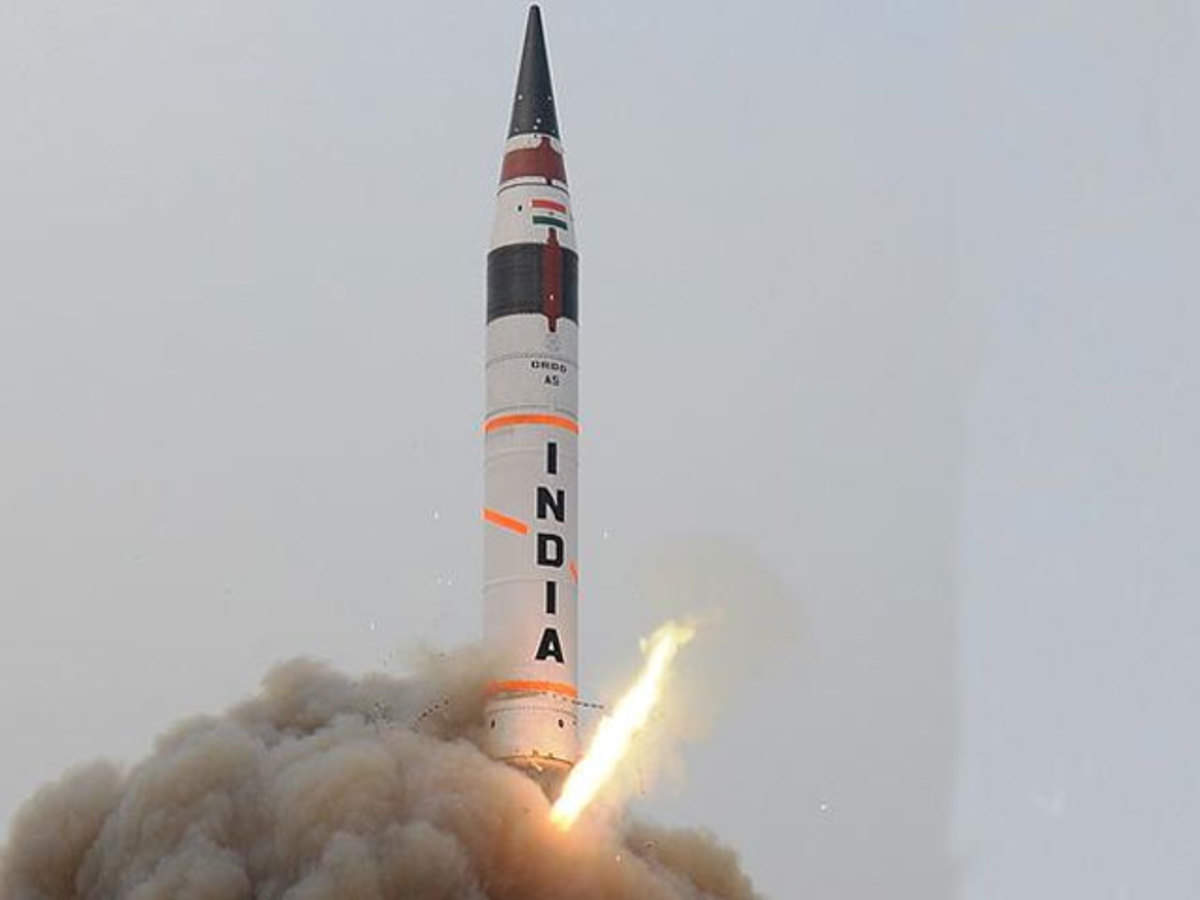
Accountability is key for any success
by Opinion Express / 24 July 2023Let us face up to the reality of the losses on our borders and take some firm action rather than spend time concealing facts from the domestic audience
It is a matter of immense national pride for all of us to have witnessed the successful launch of Chandrayaan- 3 on its epic journey and landing on the moon’s South Pole. Though well begun is only half done, one is hopeful that the team of dedicated scientists, engineers and technicians behind this project are rewarded for their wholehearted dedication and untiring efforts towards this mission with complete success.
The very fact that ISRO has achieved so much, with a minuscule budget of around Rs 650 Crores to boot, speaks volumes for its focus. Some movies cost more to make! It is therefore extremely puzzling as to why our engineers dealing with more mundane issues of town and infrastructure planning have made such a hash of things all around the country, as the monsoon plays out.
Of course, unexpected extreme weather may have been responsible for some of the havoc, but why was this not foreseen and catered for? After all a veritable army is employed, and paid for by taxpayers' money, for just this very thing! We have also had an array of civil servants and politicians, including the Prime Minister, travelling the world and attending a host of conferences and symposiums on mitigating the impact of climate change, on tax-payers money of course. These have been nothing more than holiday jaunts for the participants.
Accountability, or to be more specific, the lack of it, is the issue here In Delhi. The unseemly fight between the elected government and a puppet Lieutenant Governor, beholden to the Central Government in more ways than one, has allowed the bureaucracy to do as it pleases and get away with daylight murder. Fortunately, nobody has yet suggested we turn Delhi into another ersatz Venice, in the way MS Mamata Banerjee has attempted to make Kolkata into another imitation of London.
Somehow non- accountability seems embedded in our DNA. Whichever facet of governance one turns one attention to suffers from this cancer. Take Manipur, where by all accounts, an intense civil war rages on, with cases of rape and murder being documented almost daily, with no end in sight. Instead, as was to be expected, the Naga community now finds itself being slowly dragged into the quagmire with one of their community recently murdered.
Despite the universal condemnation, whether the Prime Minister speaks up publicly is unimportant. Though, he has now been forced to break his months-old vow of silence following the horrific and shameful video of Meitei crowds parading two naked Kuki women on mainstream media. More importantly, why has his government not substantially intervened as yet? In such circumstances what can one expect from complicit local politicians and bureaucrats awho are a part of the problem and not the solution?
But this is not an issue restricted to the political establishment or those in government. Mainstream media could not be bothered till now and paid only lip service to the issue. Those from civil society who never lose an opportunity to focus the spotlight on human rights and alleged violations by the security forces have not uttered even a squeak. That certainly is a pointer to the disturbing fact that those who covertly financially incentivise their initiatives have felt it necessary that Manipur should burn. This is not just local politics playing out, but something far more reprehensible and sinister.
In the same vein the BJP much touted nationalistic agenda and supposedly “muscular foreign policy” has turned out to be a damp squib, as it has cut no ice with China. The External Affairs Minister needs to clarify if we have any realistic hope of recovering the estimated 3000 square km of territory, that some analysts have alleged, we claim but can no longer patrol, in Eastern Ladakh.
In this context, the wishy-washy excuse of differing perceptions about the alignment of the LAC or whataboutism with regard to the loss of much of the Aksai Chin in the 1950s cuts no ice. As Mr Shyam Saran, former Foreign Secretary, points out by doing so, our side has implicitly conceded to Chinese perceptions and double-speak. The fact is, if we are unwilling to categorically and publicly state our position on the alignment of the LAC, why would the Chinese clarify their position? They see “salami slicing” actions as legitimate. We, of course, refuse to face up to the reality of the losses and spend more time concealing facts from the domestic audience rather than taking any firm action. Whinging, it seems is the default mode of all our governments.
Without accountability, we’re going nowhere and it needs to start with this government holding those responsible for the Ladakh fiasco accountable. Is it worried that by doing so they would have to concede the Prime Minister had deliberately mis-spoken when he famously gave the Chinese a clean chit? Holding to account members of the security and intelligence establishment should not in any way be linked to politics. It was indeed an unhealthy trend set by Mr Vajpayee’s government following the Kargil Conflict that needs to be reversed, and quickly, lest we find ourselves even more deeply embarrassed in the future.
(The writer is a military veteran, currently a Visiting Fellow with the Observer Research Foundation and Senior Visiting Fellow with the Peninsula Foundation, Chennai)
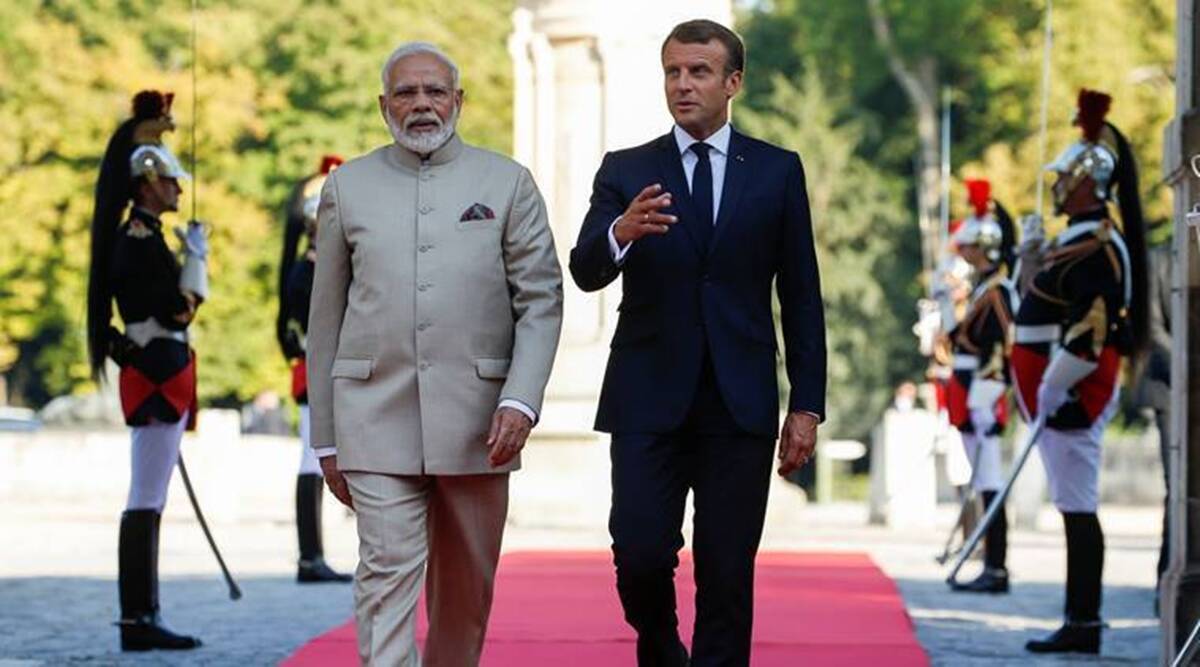
India-France can be a potent force
by The Pioneer / 23 July 2023Together, the two countries can be an effective balancing power in the Indo-Pacific
Prime Minister Narendra Modi undertook another high level to India’s west, less than a month after his state visit to the US. The visit to France last week is a reminder of the changing geopolitics, aligned with 21st-century realities. If several rounds of vegetarian meals hosted by America’s top leadership, the second chance to address a joint session of the US Congress were a teaser, France upped the game by bestowing the Grand Cross of the Legion of Honour, the highest civilian and military honour on PM, not to forget the proud Indian tri-services marching on Champs- Elysees. It is a reminder to India steadily taking the rightful place in the global order, specifically, when it comes to the Indo-Pacific region, to an extent catalysed by the presence of China, whose aggressive manoeuvres in the Indian Ocean region and beyond are forcing new alliances and partnerships.
It is significant that even though India hasn’t clearly articulated its Indo-Pacific strategy, unlike France and US, there was a joint statement released during the PM’s Paris visit. The note mentioned “Our countries believe in a free, open, inclusive, secure and peaceful Indo Pacific region. Our cooperation seeks to secure our own economic and security interests; ensure equal and free access to global commons; build partnerships of prosperity in the region; advance the rule of international law; and, working with others in the region and beyond, build a balanced and stable order in the region, with respect for sovereignty and territorial integrity. “
A mention regarding PM Modi's envisioned SAGAR ((Security and Growth for All in the Region) and President Macron’s vision of the security and cooperation being aligned, was made, to highlight the key glue for the 25-year-old India-France relationship. France has always partnered with India on the premise of strategic autonomy. This goes well for India, as it doesn’t impose conditions for bilateral cooperation. It takes away the uncomfortable “Us vs Them “, narrative, providing the breathing space for a healthy friendship to take life. That the India-France relationship has stood the test of time, such as France not imposing sanctions on India in the aftermath of nuclear tests, or not criticising India for its non-committal stance on Ukraine, is well documented.
The current roadmap extends the partnership to bring a larger bunch of partner countries located in the vast Indo-Pacific region under a common umbrella. The joint statement read “We will continue to work together to extend development cooperation to countries in the region, including in Africa, the Indian Ocean Region, South Asia, Southeast Asia and the Pacific. We will strengthen our plurilateral arrangements with Australia and UAE and build new ones in the region. We will strengthen our cooperation in regional forums such as the Indian Ocean Rim Association, the Indian Ocean Naval Symposium, the Indian Ocean Commission, the Djibouti Code of Conduct, the ADMM+ and ARF.”
India and France are already working on a trilateral platform with Australia and UAE, and plan to expand the net on most critical areas of maritime cooperation, security, climate change etc to a wider bunch of nations impacted in the region. These nations while not as large, economically or area-wise, as compared to India hold strategic spots in the extended Indo-Pacific expanse, which India loosely defines as ranging from US east coast to the African west coast. This region also controls/hosts some of the most heavy traffic sea routes, through which billions of dollars’ worth of goods are traded across the world China is increasingly getting aggressive in the Indian Ocean region, slowly building strategic military bases by coercion (most often) in some of these smaller island nations threatening territorial sovereignty of many countries. A joint collaborative approach between India and France, taken together with a vision for the next 25 years augurs well to act as an effective balancing power.
(Kumardeep Banerjee: The writer is a policy analyst)
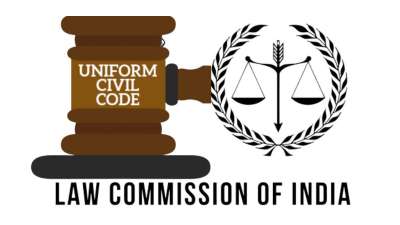
UCC—A political Pandora's box
by Opinion Express / 02 July 2023If the government obtained parliamentary nod for the UCC, it is likely to position it as a central issue in the upcoming state elections, with the hope of capitalizing on it in the next year’s Lok Sabha polls, writes Navin Upadhyay
The ongoing debate surrounding the Uniform Civil Code (UCC) has gained momentum with the Modi government's vigorous push for its implementation. The timing of this push, ahead of the Lok Sabha elections, is seen as a strategic move to consolidate support among the Hindu electorate. With the impending inauguration of the Ram temple in Ayodhya and the previous abrogation of Article 370 in Jammu and Kashmir, Prime Minister Narendra Modi has a strong narrative to reinforce its commitment to fulfilling its promises to the nation.
The government's expectation is that opposition parties will reject the UCC, both within and outside the parliament, thereby potentially consolidating Hindu votes in favor of the BJP. Notably, most major opposition parties in India are against the implementation of a Uniform Civil Code. They argue that such a code would infringe upon the freedom of religion for minority communities and contend that the existing system of personal laws is effective in addressing matters of personal and family affairs.
The opposition's concern is rooted in the fear that the UCC might be used as a tool by the ruling party to promote Hindu majoritarianism, which goes against the principles of secularism enshrined in the Indian Constitution. Parties such as the Congress, Trinamool Congress, JD(U), RJD, SP, CPI(M), and CPI have accused the Modi government of exploiting the UCC as a political ploy to appeal to the majority Hindu population ahead of the upcoming elections. On the other hand, the Aam Aadmi Party (AAP) has expressed conditional support for the UCC, emphasizing the importance of building a broad consensus through consultation with all stakeholders.
The concerns raised by the Akali Dal, a former ally of the BJP, are particularly significant. The Sikh community, known for its strong religious identity, is wary of any attempts to impose laws that could potentially infringe upon their religious practices. Akali Dal spokesperson Daljit Singh Cheema has argued that civil laws, influenced by faith, belief, caste, and customs, should be retained to protect the social fabric and uphold the principle of unity in diversity.
Even the Uddhav Thackeray-led Shiv Sena, a pro-Hindutva party, has refrained from openly endorsing the UCC. In an editorial published in its mouthpiece 'Saamna', the Shiv Sena emphasized that the basis for the Uniform Civil Code should not be solely opposition to Muslim Sharia law. They stressed the need for equality in law and justice as the fundamental principles underlying the UCC, transcending religious affiliations.
The Uniform UCC has been a subject of contentious debate in India for several decades. It pertains to the idea of formulating a common set of personal laws that would apply to all citizens, regardless of their religious affiliation. The UCC aims to promote gender equality, secularism, and social harmony by replacing the existing separate personal laws for different religious communities. However, the implementation of a uniform civil code has faced significant opposition and continues to be a topic of intense discussion within the country.
India, with its diverse religious and cultural mosaic, inherited a system of personal laws from its colonial past. These personal laws govern various aspects of citizens' lives, such as marriage, divorce, inheritance, and adoption. The country currently has separate sets of personal laws for different religious communities, including Hindus, Muslims, Christians, and others. The idea of a uniform civil code was enshrined in Article 44 of the Indian Constitution, which called for its eventual implementation.
The debate surrounding the implementation of a uniform civil code can be traced back to the colonial era when the British introduced separate personal laws for different religious communities. These laws were aimed at maintaining religious and cultural identities but also created disparities in terms of gender rights and social practices.
Proponents of the UCC argue that a common set of laws would promote equality and justice for all citizens. They contend that the existing personal laws, which often differ significantly across religious communities, can perpetuate gender discrimination. For instance, some argue that certain provisions in Muslim personal law, such as those related to divorce and inheritance, are biased against women. Implementing a uniform civil code is seen as a step towards ensuring gender equality and eliminating discrimination.
Supporters of the UCC argue that it would reinforce the principles of a secular state. By having different personal laws based on religious affiliations, critics argue that the state is inadvertently interfering in religious matters. Implementing a uniform civil code would align the legal framework with the principles of secularism, treating all citizens equally, irrespective of their religious background, they argue.
Advocates for the UCC also emphasize that it would foster a sense of national unity and social cohesion. They argue that a uniform civil code would transcend religious boundaries and create a common platform for all citizens, strengthening the bonds of a diverse society. It would promote a shared understanding of rights and responsibilities, thereby contributing to a more harmonious and inclusive nation.
However, opponents of the UCC express concerns about potential infringement upon religious freedoms and cultural diversity. They argue that personal laws are deeply rooted in religious beliefs and practices, and any attempt to impose a uniform code would undermine the autonomy of religious communities. Critics contend that personal laws provide a sense of identity, community, and continuity for religious minorities, and any attempt to change them would be seen as an encroachment on their religious rights.
One of the primary concerns raised by opponents of the UCC is that it may dilute the cultural diversity of India. The country prides itself on its rich heritage and the coexistence of multiple religious and cultural traditions. The proponents of diversity argue that personal laws reflect the distinct identities and practices of different communities, and any move towards uniformity would erode the uniqueness and plurality of Indian society.
Another significant concern is that the implementation of a uniform civil code may disrupt the delicate balance between religious communities in a pluralistic society like India. The country's secular fabric relies on the principle of respecting and accommodating religious differences. Critics argue that enforcing a uniform code may lead to communal tensions and hinder social cohesion. They contend that personal laws have evolved over centuries, shaped by the customs, traditions, and religious scriptures of each community, and any attempt to replace them with a uniform code would disregard these deeply ingrained practices.
Opponents also argue that personal laws provide certain protections and safeguards for marginalized sections of society within specific religious communities. They fear that a uniform civil code may overlook these protective provisions and leave vulnerable groups without adequate legal recourse. For example, Muslim personal law contains provisions for the maintenance and the welfare of divorced women, which may not be adequately addressed under a uniform civil code.
The potential implementation of the Uniform Civil Code by the government holds significant implications for the upcoming elections in Madhya Pradesh, Rajasthan, Telangana, and Chhattisgarh. If the government obtained a parliamentary nod for the UCC, it is likely to position it as a central issue in these state elections, with the hope of capitalizing on it in the subsequent Lok Sabha polls.
On the other hand, the opposition parties face a delicate balancing act. This is especially crucial as the UCC is being portrayed in media and political debates as something that would primarily affect Muslims. To avoid alienating Hindu voters, the opposition parties will have to articulate their concerns about the UCC without being perceived as practicing the policy of “appeasement”.
The Goa Uniform Civil Code
The Uniform Civil Code (UCC) has been a subject of debate in India for many years. However, in the small state of Goa, a unique and progressive Uniform Civil Code has been in place for decades. The Goa Civil Code, also known as the Goa Family Law, applies to all residents of Goa, irrespective of their religious affiliation. It is often regarded as a model for a pluralistic society, providing a framework that promotes gender equality and safeguards individual rights while respecting the diversity of religious customs and traditions.
Goa's legal system underwent significant transformations throughout history. Before its liberation from Portuguese colonial rule in 1961, Goa followed the Portuguese Civil Code, which incorporated elements of both Roman and Canon Law. When Goa became a part of the Indian Union, a decision was made to retain certain aspects of the Portuguese Civil Code while integrating reforms to align with the principles of the Indian Constitution.
Key Features:
Gender Equality: One of the defining features of the Goa Uniform Civil Code is its emphasis on gender equality. It grants women the right to inherit property equally, irrespective of their religious affiliation. This provision challenges the discriminatory practices prevalent in the personal laws of many other communities in India. The Goa Civil Code also ensures equal rights in matters of divorce, alimony, and child custody, striving to create a more equitable legal framework for women.
Customary Practices and Religious Freedom: The Goa Uniform Civil Code recognizes the significance of customary practices and religious freedom. It allows individuals to follow their respective religious rituals and traditions in matters of marriage, divorce, and inheritance, as long as they do not violate the principles of gender equality and fundamental rights. This approach strikes a balance between preserving religious diversity and upholding constitutional values.
Codification and Simplification: The Goa Civil Code also stands out for its codification and simplification of laws. It consolidates various legal provisions into a comprehensive and accessible code, making it easier for individuals to understand and navigate the legal system. This simplification has contributed to greater legal awareness and empowerment among the residents of Goa.
Others question the feasibility of implementing a similar code at the national level. The diversity of India, both in terms of religion and culture, poses challenges in creating a uniform code that accommodates the complexities and sensitivities of each community.
(By Navin Updadhyay: The writer is the Executive Editor of The Pioneer)
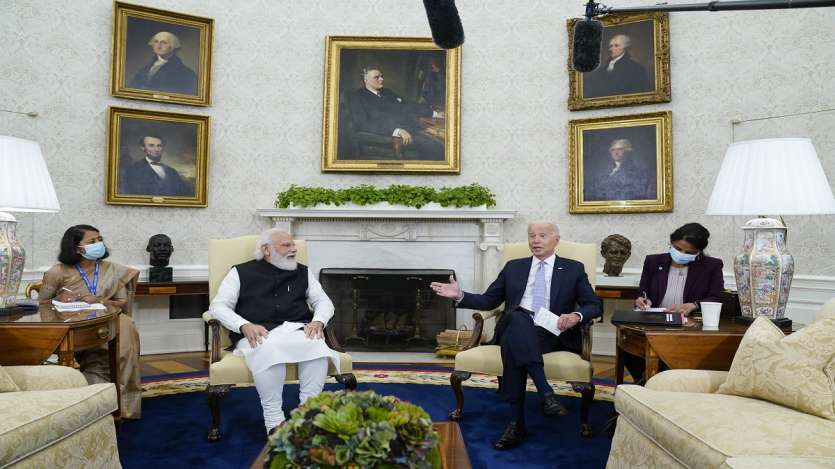
“Narendra Modi's US State Visit Paves the Way for Global Cooperation
by Prashant Tewari / 20 June 2023In the realm of international diplomacy, state visits play a crucial role in strengthening bilateral relations between nations. The relevance of an official state visit by a major global leader to the United States lies in its potential to strengthen bilateral relations, promote dialogue on key issues, and enhance cooperation in various fields. State visits provide an opportunity for leaders to engage in high-level diplomacy, exchange ideas, and foster mutual understanding. It serves as a platform to address shared challenges, expand trade and economic partnerships, and coordinate efforts on global matters such as climate change, security, and human rights. Overall, state visits contribute to the maintenance and advancement of international relations in an increasingly interconnected world.
One such significant event is the state visit of Indian Prime Minister Narendra Modi to the United States. Narendra Modi's proposed state visit to the United States carried profound implications for both countries, encompassing diplomatic, economic, and strategic dimensions.
The significant implications of the proposed state visit of the Indian Prime Minister
The visit provided an opportunity to deepen the diplomatic ties between India and the United States, two democratic nations with shared values and interests. Through high-level meetings and dialogues, the leaders aimed to foster cooperation on various global issues, including climate change, regional security, and counterterrorism. The state visit also served as a platform for India to engage with other key global players. As India seeks a larger role in international forums, such as the United Nations Security Council, the visit offered a chance to garner support and build alliances.
The proposed visit will have tremendous economic Implications, strengthening economic ties will be a significant aspect of the state visit. The United States is India's largest trading partner, and both countries sought to enhance bilateral trade, remove trade barriers, and explore opportunities for investment in sectors such as technology, defense, and renewable energy.
On the technology Transfer and Innovation front, major collaboration in the fields of technology and innovation emerged as a key focus during the visit. India's burgeoning start-up ecosystem and the United States' leadership in technological advancements created possibilities for joint ventures, research partnerships, and knowledge sharing.
Finally, the proposed visit will have Strategic Implications for Defense Cooperation. The visit emphasized defense collaboration between India and the United States, with discussions on defense procurement, joint military exercises, and technology sharing. Strengthening defense ties would enhance the security of both nations and contribute to regional stability.
The visit will address the growing expansionist intent of China hence the Indo-Pacific Cooperation become extremely relevant. The state visit highlighted the converging interests of India and the United States in the Indo-Pacific region. Closer cooperation in this domain, encompassing maritime security, freedom of navigation, and regional connectivity, aimed to balance China's growing influence in the region.
Role of the New US Ambassador to India
The role of the US Ambassador to India Eric Garcetti is vital in facilitating a mega success for the proposed Narendra Modi's state visit to the US from 22 June 2023. The appointment of an ambassador with political background signifies the importance a nation places on its relationship with another country and sets the tone for collaboration. The fact that immediately after his appointment as the US Ambassador to India, the proposed state visit of the Indian head of state is planned is a testimony to the US Ambassador’s relevance in the entire episode. The proposed Indian Prime Minister’s state visit is happening since the last Indian head of state visit of Dr Manmohan Singh on 24 Nov 2009.
The ambassador has quickly started acting as a bridge between the two governments, facilitating direct communication and fostering understanding. By leveraging his political experience and diplomatic expertise, the ambassador is playing a vital role in coordinating high-level meetings, setting agendas, and ensuring fruitful discussions on a range of bilateral and global issues.
The ambassador is playing a crucial role in connecting the people of both nations and promoting cultural exchanges. Upon assuming office, he has visited many Indian cities, and his social media platform is abuzz with activities. Through NGOs like Friends of the United States, various cultural events, educational collaborations, and business forums, the new ambassador is encouraging mutual understanding, strengthening people-to-people ties, and nurturing long-term relationships.
Prashant Tewari, Editor-in-Chief Opinion Express & Columnist with The Pioneer
FREE Download
OPINION EXPRESS MAGAZINE
Offer of the Month





